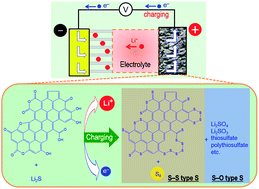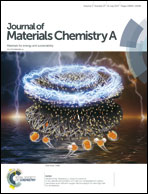A cost-effective approach for practically viable Li-ion capacitors by using Li2S as an in situ Li-ion source material†
Abstract
Li-ion capacitors (LICs) bridge the gap between Li-ion batteries and electric double layer capacitors in terms of energy and power densities by combining a pre-lithiated negative electrode and an activated carbon (AC) positive electrode into a single device. Pre-lithiation of the negative electrode has been a major obstacle for the commercialization of LICs due to its high cost and process complexity. Aiming to eliminate the use of pre-lithiated negative electrodes, we propose a simple and cost-effective approach by adding a small amount of Li2S into the positive electrode to enable in situ lithiation. The concept of this approach is based on two facts: (1) the AC material contains large numbers of surface oxygen functionalities, and (2) Li2S reacts with oxygen functionalities forming sulfurized carbon and irreversibly releasing Li+ ions. In this paper, we experimentally validate our concept by using a graphite negative electrode and an AC positive electrode. It is shown that the addition of Li2S does not significantly affect the capacitance performance of the AC positive electrode, and that a Li2S-loaded positive electrode still retains a specific capacity of 71 mA h g−1 AC and a specific capacitance of 128 F g−1 AC in an operating voltage range between 2.0 V and 4.0 V.



 Please wait while we load your content...
Please wait while we load your content...